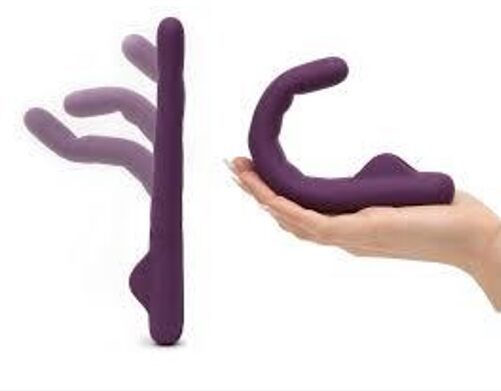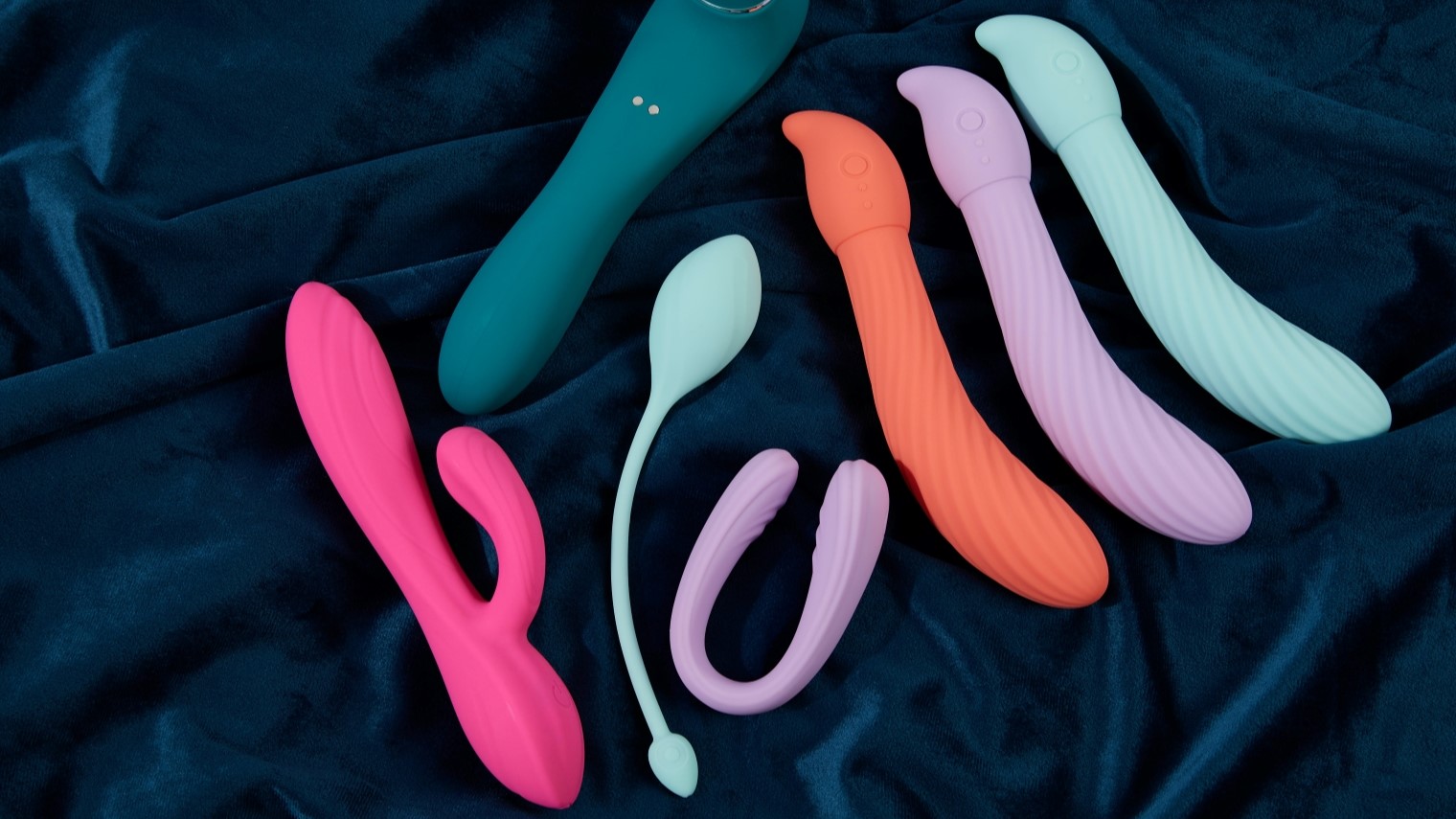What if I told you that the remedy for better health hums, buzzes, and delights?
But don’t take our word for it.
Published in Sexual Medicine Reviews, a January 2023 article is making waves in pelvic floor health research as it dives into the medical literature exploring the benefits of vibrators.
Results of this systematic review suggest that these pleasure devices can help enhance sex, release tensions, ease vulvar pain, and boost pelvic muscle function. Such compelling findings make a strong case for vibrators to act as sexual wellness aids and become a go-to, accessible option for treating several sexual health concerns for people with vulvas.
How common are vibrators?
Vibrators are mainstream. They can be easily purchased online, in sex shops, or in everyday places, such as drug stores and beauty shops. Yet, there’s shockingly little scientific research on these sexual aids.
Dr. Alexandra Dubinskaya, a urogynecologist at Los Angeles Institute for Pelvic and Sexual Health and at Cedars-Sinai Medical Center, who recommends vibrators to patients, took on the challenge of dissecting this limited literature—a grand total of 17 original studies.

“Throughout a woman’s life, her body, especially the genitourinary system, undergoes many changes: puberty, childbirth with its traumatic effects on the pelvic floor, aging, menopause,” she said.
“Vibrators came to mind as a potential ideal tool that can improve blood flow to the targeted organs and serve as a rehabilitation device.”
Among the studies, her team found that more than half of women had tried personal massagers at least once in their lives (53% of 3,800), with most having explored clitoral stimulation (83.8%), and two-thirds having used these devices inside the vagina (64%).
Another survey of 202 women revealed that most women (prefer using vibrators while lying down (77%). Clitoral stimulation was again, most popular among respondents (58%). Nearly a quarter preferred circular motions (23%) and about a third mixed it up with back/forth or up/down movements (36%).
The benefits of vibrators
Vibrators work by exciting the nerves in your genital skin, igniting significant sexual sensations that build up desire and arousal. These devices can help augment blood flow to clitoral and vaginal regions—increasing circulation, tissue swelling, and lubrication.
All important steps for getting in the mood.
Indeed, research shows that, thanks to vibrators, people report more pleasant genital sensations during intercourse, and that these sensations can boost their desire and strengthen their interest in sexual exploration. Vibe users also reported higher levels of satisfaction and decreased sexual distress.
In addition, a nationally representative US survey revealed that women with positive views about vibrator use were more likely to report higher rates of arousal, lubrication, orgasm, satisfaction, and reduced pain.
And for y’all gentlemen, one study also noted that a partner’s openness to vibrators was linked to increased sexual satisfaction, particularly among heterosexual women.

Dr. Lyndsey Harper, an OB/GYN, and the CEO and Founder of sexual health app Rosy, also touts their benefits for couples, saying they can help achieve simultaneous orgasm during partnered sex and introduce novelty into a relationship.
Reaching the big O
Vibrators can help users reach orgasms.
This may come as a relief to learn, particularly for those who struggle with low sensitivity, have difficulty achieving climax, or experience anorgasmia—i.e., the delayed, infrequent, or absence of orgasm following adequate sexual arousal and stimulation.
One promising study revealed their potential as part of a holistic treatment. Out of 500 women who couldn’t orgasm for an average of 12 years, a whopping 93% finally managed to reach to big O.
Vibrators are also time-savers: not only can they reduce time to climax, but they also make it easier to achieve multiple orgasms.
In that regard, keeping the vibe constant, rather than varying speed or starting and stopping, seems to be the best way to bring about the grand finale.
Pelvic floor therapy tools
For some women, contracting pelvic floor muscles on command can be a real challenge. When those muscles are weak or damaged, it can lead to discomfort and a loss of bladder control.
Research indicates that adding vibrations to areas like the clitoris or perineum has led to significant improvements for stress urinary incontinence.
Combined with pelvic floor therapy, vibrators are powerful tools that can augment positive results and reduce unexpected leaks. Studies show they improve outcomes when mixed with other treatments, such as manual therapy, exercises, heat, and light therapy.
These findings suggest that vibratory stimulation can enhance pelvic floor muscle contractions, particularly when combined with exercises—i.e., consistent exercises seem to be a key factor in achieving positive outcomes.
Vibrate the pain away
Commercially available vibrators have been shown to help women with vulvodynia, a chronic pain condition affecting the vulvar area. That’s because vibration can desensitize and relieve genital pain.
A study with 49 women showed that Vibrational Vulvar Therapy was positively received. They were instructed to use the device for 5 to 10 minutes daily for 4 to 6 weeks, with the following results:
- 73% reported a decrease in pain.
- 74% noted an increase in sexual enjoyment.
- 83% expressed satisfaction with the treatment.
- 90% felt comfortable with their doctors recommending vibrator treatment.

Cancer patients dealing with vaginal scarring and pain due to pelvic radiation may also gain relief from vibrating aids, Dr. Dubinskaya suggested in her literature review. As noted, they can enhance blood flow, ease discomfort, and work well in combination with vaginal dilators.
Published in The Journal of Sexual Medicine in April 2022 and sponsored by MysteryVibe, a clinical trial also shows promise for people living with Genito-pelvic pain and penetration disorder. The 11 patients who used the MysteryVibe Crescendo vibrator for 12 weeks showed a significant improvement in pain scores measured by the Female Sexual Function Index.
Notably, the Crescendo is an FDA-registered medical vibrating device. It can be reimbursed by medical insurance when billed by healthcare clinics as part of pelvic floor therapy, says MysteryVibe CEO and Co-founder Soumyadip Rakshit, Ph.D.
Vibrators and aging
“As we age, it can take longer to achieve an orgasm, and orgasms tend to become muted—they are shorter and weaker,” Dr. Dubinskaya said.
“Vibrator use can help facilitate achieving an orgasm and, at the same time, improve vaginal lubrication and create a positive sexual experience.”
Intensity is crucial, especially for aging women dealing with conditions like urinary incontinence, multiple sclerosis, and sexual dysfunction, who may need stronger vibrations for arousal and orgasm.
In fact, vibrators can serve as a health maintenance tool for mild cases of incontinence or as a preventative measure after pregnancy, during post-reproductive years, and in menopause.
Boosting blood flow to the pelvic area and keeping pelvic muscles strong can significantly improve bladder and urethral sphincter function.
Embracing vibrators in healthcare
When it comes to vibrator research, the scientific community is still scratching the surface of what’s possible. However, the benefits shown offer persuasive grounds for further exploration in health care.
Conditions such as pelvic floor dysfunction, vulvodynia, incontinence, anorgasmia, and other sexual dysfunctions—issues often tackled by urologists and gynecologists —could benefit from vibrator therapy.
Unfortunately, most doctors aren’t trained in using them or even aware of their medical advantages.
Another challenge is the word “vibrator” itself, says Dr. Lyndsey Harper
“There are many negative inferences around vibrators including that you don’t need one if you have a good partner or that it is only for a promiscuous ‘type’ of person. These myths are harmful and keep people from experiencing their complete sexual pleasure. Many in the field of sex-medicine have called for a rebrand of vibrators to ‘pelvic floor stimulators’ in order to overcome this stigma.”
Still, women are open to receiving such affordable and easy-to-find sexual aids as treatments.
The future of healthcare buzzes with potential.
Featured Image Source: Pexels/IFONNX Toys



